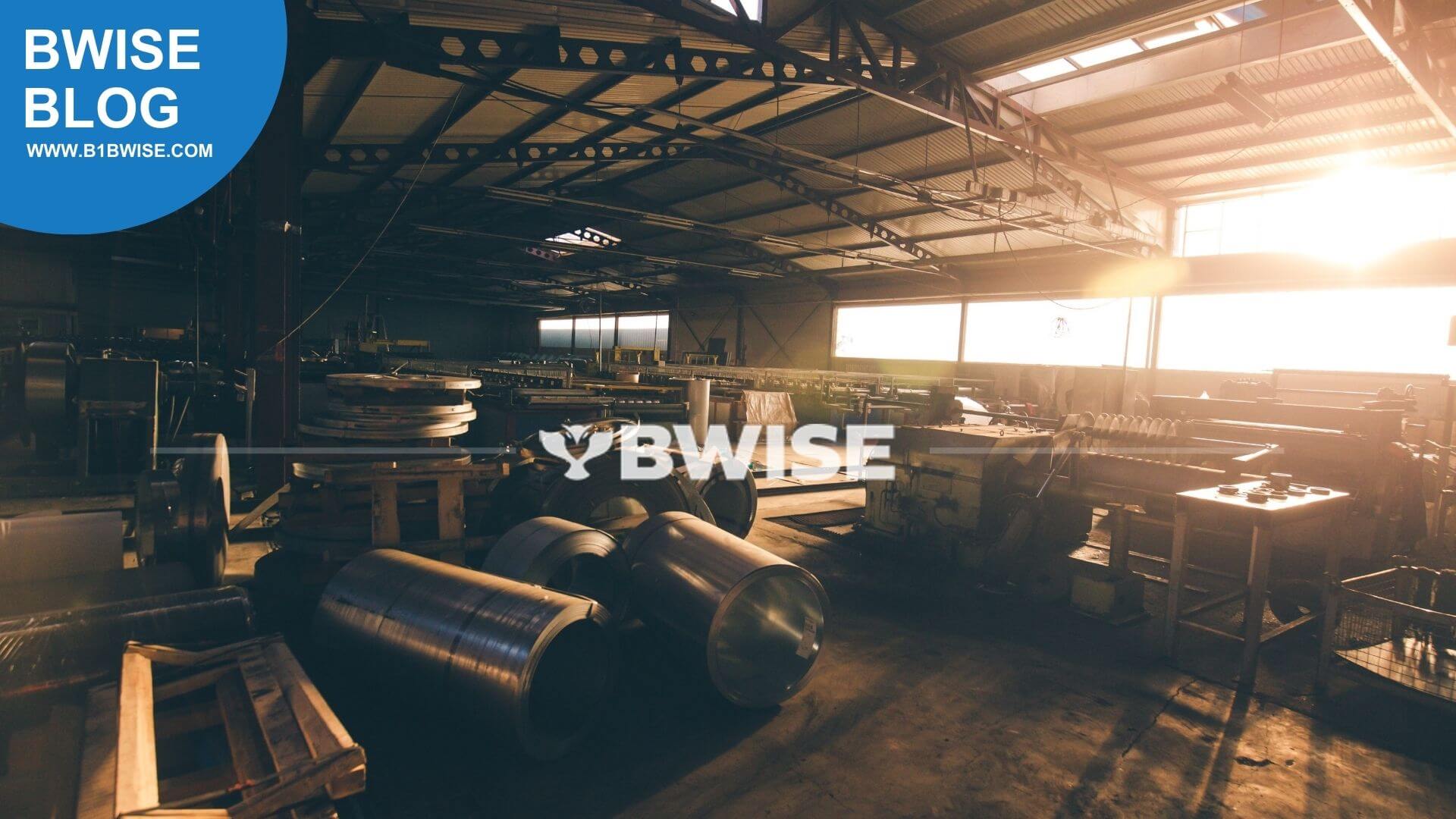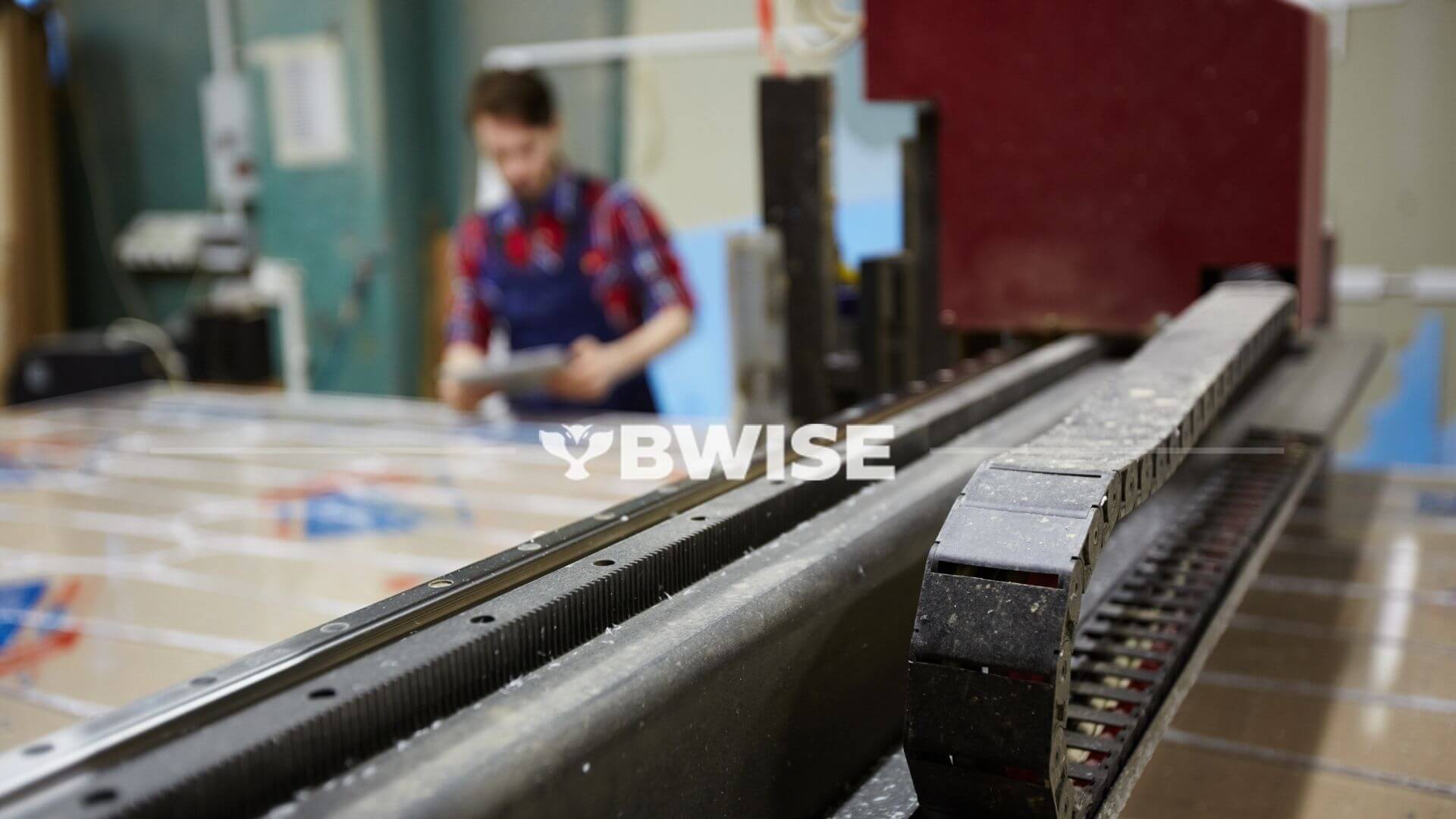
Manufacturing companies are constantly striving to enhance their operations, boost productivity, and remain competitive in today’s fast-paced business environment. One key solution that is rapidly gaining popularity among manufacturers is ERP Manufacturing software. In this comprehensive guide, we will explore the world of ERP Manufacturing and understand how it can transform the manufacturing industry.
Key Takeaways:
-
- ERP Manufacturing software can streamline operations and enhance efficiency for manufacturing companies.
- The core features of ERP systems designed for the manufacturing sector include inventory management, supply chain integration, production planning, quality control, and more.
- Implementing ERP systems requires critical considerations and best practices for ensuring success.
- Choosing the right ERP solution for your organization involves considering scalability, customization options, integration capabilities, and vendor selection criteria.
- Providing effective training and ongoing support to users of ERP Manufacturing systems is crucial in maximizing system utilization.
Key Topics:
- What is ERP Manufacturing?
- Benefits of ERP Manufacturing
- Key Features of ERP Manufacturing Software
- Implementing ERP in the Manufacturing Industry
- Choosing the Right ERP Manufacturing Solution
- Trends and Innovations in ERP Manufacturing
- Overcoming Challenges in ERP Manufacturing Implementation
- Training and Support for ERP Manufacturing Users
- Conclusion
What is ERP Manufacturing?
ERP Manufacturing refers to a type of software system designed to optimize manufacturing operations and streamline processes. It integrates various functions such as inventory management, production planning, quality control, and supply chain management into a centralized platform. ERP Manufacturing solutions are tailored specifically to meet the requirements of the manufacturing industry.
The core features of ERP Manufacturing software include:
| Feature | Description |
| Inventory Management | Keeping track of inventory levels, managing stock, and automating reordering processes. |
| Production Planning | Scheduling production processes, allocating resources, and forecasting demand. |
| Quality Control | Ensuring that products meet quality standards through automated inspection, testing, and monitoring. |
| Supply Chain Management | Managing suppliers, vendors, and partners in the supply chain and optimizing logistics processes. |
ERP Manufacturing software automates these functions, allowing manufacturers to reduce costs, improve efficiency, and enhance productivity.
Benefits of ERP Manufacturing
Implementing an ERP solution in manufacturing can offer many benefits that contribute to increased productivity and profitability. Below are some advantages of using ERP Manufacturing software:
| Improved Resource Planning | Enhanced Communication | Streamlined Operations |
| ERP systems enable manufacturers to manage resources effectively, optimizing planning and prioritizing workloads for increased efficiency. | ERP software facilitates communication among teams, departments, and suppliers, ensuring everyone is on the same page. | ERP systems automate routine tasks, allowing teams to focus on core business functions and generate more value for the organization. |
| Reduced Costs | Better Customer Service | Increased Transparency |
| ERP Manufacturing software reduces operational costs by eliminating wastages, streamlining inventory, and optimizing production schedules. | ERP systems enable manufacturers to respond quickly to customer demands, providing real-time information about orders, production status, and delivery timelines. | ERP software provides insights into various aspects of the manufacturing process, enhancing transparency and accountability across the organization. |
By leveraging the benefits of an ERP Manufacturing solution, manufacturers can optimize their business processes, reduce errors, and improve collaboration across departments and stakeholders.
Key Features of ERP Manufacturing Software
ERP Manufacturing Software is an all-in-one solution for manufacturers looking to streamline their operations. Let us dive into its key features:
|
Feature |
Description |
|
Inventory Management |
Track and manage inventory levels, set re-order points, and monitor stock movements in real-time. |
|
Supply Chain Integration |
Integrate with suppliers and partners to manage orders, deliveries, and invoices centrally. |
|
Production Planning |
Plan and schedule production activities, manage work orders, and allocate resources efficiently. |
|
Quality Control |
Set quality standards, track quality metrics, and manage product recalls or defects effectively. |
|
Data Analytics |
Generate interactive reports, dashboards, and visualizations to monitor business performance and identify areas for improvement. |
|
Mobile Access |
Access critical information and functionalities on-the-go, from any device or location. |
These features form the backbone of ERP Manufacturing software, providing manufacturers with complete visibility, control, and agility over their business processes. By leveraging these capabilities, manufacturers can optimize their workflows, reduce costs, and enhance their overall business performance.

Implementing ERP in the Manufacturing Industry
Successfully implementing Enterprise Resource Planning (ERP) systems in the manufacturing industry involves critical considerations and implementation of best practices. This process takes time, care, and attention to detail to avoid unnecessary difficulties. By carefully following a comprehensive plan, manufacturing organizations can mitigate these challenges and reap the benefits that ERP systems provide. Below are some key steps to an ERP implementation process in the manufacturing industry:
Gather Requirements and Define Objectives
Before proceeding with an ERP implementation, the manufacturing organization should define its requirements and objectives. This step ensures that the organization will properly align its goals with the ERP system implementation. Review business processes and workflows, identify the gaps, and specify the needs to meet them. Then involve key stakeholders to define the inputs, outputs, and desired outcomes.
Select the Right Vendor
Choosing the right vendor is imperative when implementing an ERP system in the manufacturing industry. The organization should review vendor options carefully based on their experience, reputation, customization options, software scalability, and post-implementation support. Contact existing customers to obtain candid feedback and evaluate the vendor’s knowledge of the industry to ensure that they are a good fit.
Create an Implementation Plan
After selecting the vendor, the organization should create a comprehensive implementation plan that outlines goals, milestones, timelines, project timelines, and budgets. This plan should involve collaboration between the vendor and company, with periodic reviews and key performance indicators to track progress and ensure that everyone is working collaboratively towards a shared goal.
Assess the Infrastructure
Before proceeding with the implementation, it is crucial to ensure that the existing IT infrastructure is optimal and can support the new ERP system. Conduct a review of the hardware, software, network, and security infrastructure, and perform any necessary upgrades to ensure the ERP system runs smoothly. If the existing infrastructure is not up to the task, consider upgrading it before proceeding with the implementation to avoid technical issues.
Provide Adequate Training and Support
Conduct training for ERP system end users and make support resources available. o them. Training assists users in understanding the new system fully, helps increase productivity and efficiency, and reduces errors. Also, it provides tutorials, training materials, FAQs, user manuals, and other standard resources affirming that users can handle or solve many of the simple questions or issues independently.
By carefully following these steps, manufacturing organizations can ensure a successful ERP implementation and begin experiencing the numerous benefits of the ERP system.
Choosing the Right ERP Manufacturing Solution
Choosing the right ERP Manufacturing solution is crucial for ensuring that the software meets your organization’s specific needs. Here are some key factors to consider:
| Criteria | Description |
| Scalability | Ensure that the ERP solution can accommodate your organization’s present and future growth needs. |
| Customization options | Assess the level of customization required to tailor the software to your specific business processes. Can the software be modified to suit your needs? |
| Integration capabilities | Confirm that the ERP solution can integrate with existing systems and applications, such as accounting software, CRM, and HR systems. |
| Vendor selection criteria | Choose a reputable vendor with a proven record of accomplishment of successful ERP implementations in the manufacturing industry. Check references and ensure that the vendor provides adequate training and support. |
The right ERP solution can drive operational efficiency and contribute to significant cost savings for your manufacturing organization. Consider these factors carefully before deciding.
Trends and Innovations in ERP Manufacturing
The manufacturing industry is constantly evolving, and so are the technologies that support it. In recent years, we have seen significant advancements in the ERP Manufacturing landscape, enabling manufacturers to operate more efficiently and effectively than ever before. Here are some of the top trends and innovations to keep an eye on:
|
Artificial Intelligence (AI) |
The integration of AI technologies with ERP systems allows manufacturers to automate processes and gain valuable insights into production operations, reducing waste and inefficiencies. |
|
Internet of Things (IoT) |
IoT sensors embedded in manufacturing equipment gather data in real-time, providing manufacturers with increased visibility into their production processes. This enables faster decision-making and improved quality control. |
|
Predictive Analytics |
By leveraging predictive analytics tools, manufacturers can identify trends and patterns in production data, allowing them to anticipate and prevent quality issues before they occur. |
Innovations such as these are transforming the manufacturing industry, pushing it towards greater efficiency and improved outcomes. By staying up to date with the latest trends, manufacturers can ensure they are taking advantage of the most innovative solutions available on the market today.
Overcoming Challenges in ERP Manufacturing Implementation
Implementing an ERP system in the manufacturing industry can be a challenging process. Some of the common challenges organizations face are:
|
Challenge |
Strategy to Overcome |
|
Lack of Buy-in from Employees |
Provide training and support to ensure employees are comfortable with the new system. |
|
Data Migration |
Ensure a clean and smooth data transfer by running several tests before the actual migration. |
|
Integration with legacy systems |
Identify and resolve integration issues early in the implementation process. |
|
Cultural Resistance |
Involve key stakeholders from across the organization in the implementation process to get their insights and buy-in. |
By addressing these challenges effectively with well-defined strategies and proper planning, organizations can ensure a successful ERP implementation and reap the benefits of streamlined operations and enhanced efficiency.
Training and Support for ERP Manufacturing Users
To maximize the benefits of ERP Manufacturing software, adequate training and ongoing support must be provided to all users. Training should encompass all essential features and functionalities of the system, with a focus on individual roles and responsibilities. Effective training approaches may include classroom training, online training modules, or on-the-job training with experienced users.
Support channels such as help desks, user forums, and online documentation should be readily available to users for quick and easy problem solving. It is important that support personnel have a deep understanding of the system and can promptly address users’ issues. Continuous software updates and regular system check-ups can also help prevent and resolve potential technical issues.
Overall, investing in adequate training and support can enhance user adoption and system utilization, leading to improved productivity and profitability for the manufacturing company.
Conclusion
In conclusion, the implementation of ERP Manufacturing software like BWISE can be a meaningful change for manufacturers looking to streamline their operations and gain a competitive advantage. By automating tasks, improving communication across departments, and promoting data-driven decision-making, ERP solutions can significantly enhance efficiency and productivity.
However, it is crucial to choose the right ERP system and approach implementation strategically. Organizations must carefully consider their business needs, scalability requirements, integration capabilities, and vendor selection criteria.
Furthermore, successful implementation relies on effective training and ongoing support for users. Companies must invest in training programs that cater to different learning styles and provide adequate support channels for users to seek assistance when needed.
As the manufacturing industry continues to evolve, ERP systems will play a crucial role in organizations’ success. It is essential to stay updated on the latest trends and innovations shaping the ERP landscape and leverage emerging technologies such as AI and IoT to drive innovation and optimize processes.
By following best practices and overcoming implementation challenges, manufacturing companies can reap the benefits of ERP Manufacturing software and thrive in today’s dynamic business environment. Need more information about our BWISE-Full Distribution Solution? You can request a demo here. Remember B1 BWISE!

